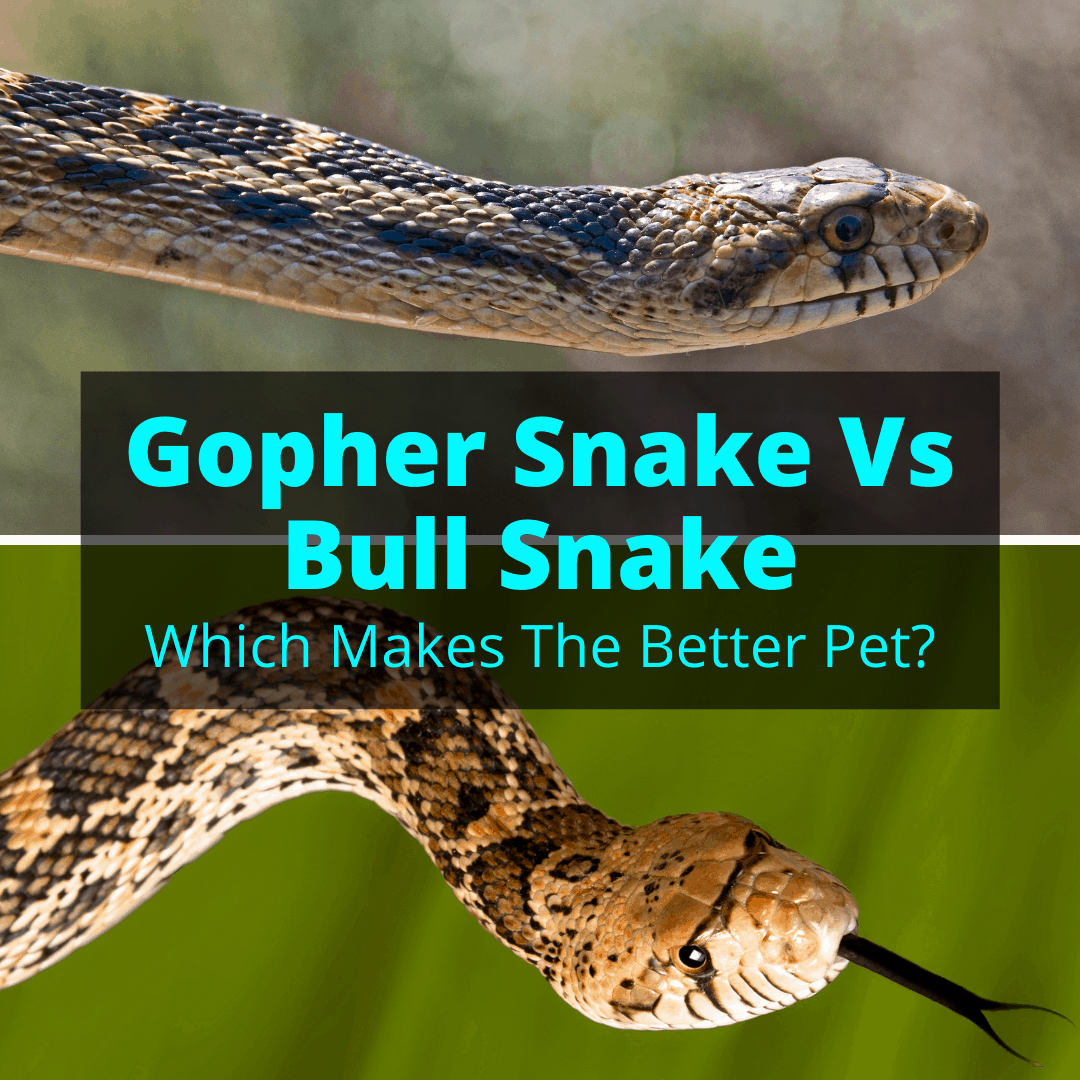
It sure seems like it, because the bull snake is actually a type of gopher snake.
So we’re really comparing a specific gopher snake to all the other non-bullsnake gopher snakes.
I can see why that may seem strange.
But it actually makes a lot of sense.
The bull snake is basically an extreme version of the gopher snake. It is larger and perhaps more aggressive than the rest. As such, it stands out.
Like other gopher snakes, it can still make a great pet. For the right owner.
Keep reading for a detailed comparison of the bull snake and other gopher snakes and a breakdown of the type of owner who would be best suited for each of these species.
Table of Contents
- 1 Gopher Snake Vs Bull Snake
- 2 Bull Snake Vs Gopher Snake
Gopher Snake Vs Bull Snake
We’ll begin our bull snake vs gopher snake comparison by looking at each snake individually. Then we’ll dive into the similarities and differences, before making some recommendations as to the type of owners who would be best suited for each species.
What Is A Gopher Snake?
A gopher snake is a large, heavy snake ranging from four to nine feet in length.
They are usually yellow or pale brown, with dark brown or black blotches on their backs that fade into smaller dots on their sides. Gopher snakes have yellow bellies.
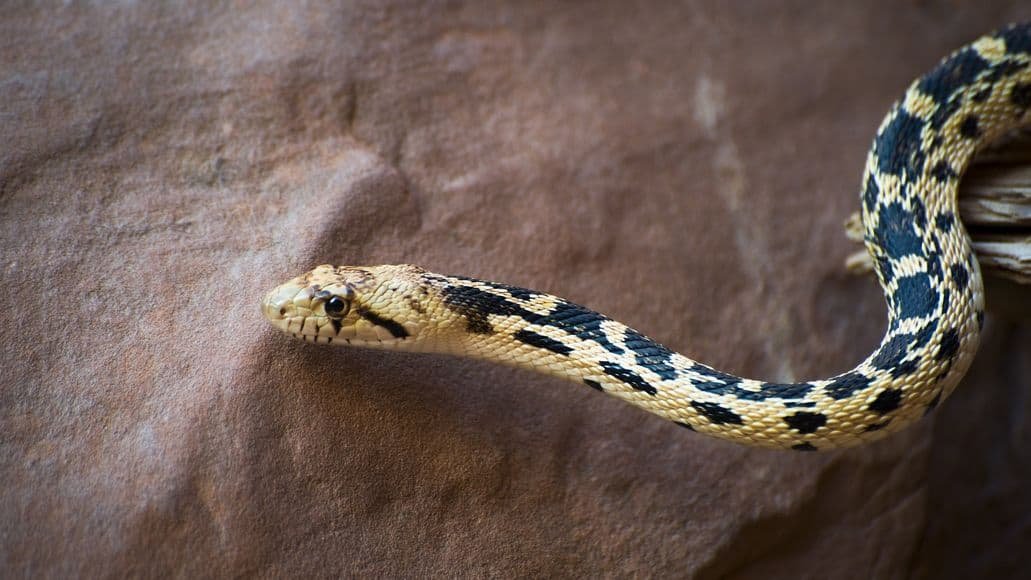
Gopher snakes are found all across North America and can live in many different habitats, such as deserts, prairies, and forests, but are most commonly found in brushy areas.
They prefer well-drained land with loose sand or gravel soil surfaces. Gopher snakes eat small mammals, birds, and eggs. They can live in captivity as pets and are excellent reptiles to provide rodent control on farms.
Many of their habitats are under attack. Urban sprawl is taking over the untamed land where they typically live. Conservation efforts include controlled burning of land in the Midwest and educating people about gopher snakes, so they are not mistaken for rattlesnakes and killed.
Gopher Snake Behavior And Looks
When encountered in the wild, gopher snakes are often mistaken for rattlesnakes. They imitate rattlesnakes when they feel threatened, hissing loudly and even shaking their tail.
When they’re acting like rattlesnakes, gopher snakes usually attack the predators with a closed mouth, attempting to scare them away.
You can differentiate them from rattlesnakes because they have narrower heads and do not have the distinctive black and white banding on their tails. Nevertheless, if you find a gopher snake in the wild, it’s best to back off, just to be safe.
In the wild, gopher snakes can live twelve to fifteen years. The oldest known gopher snake in captivity lived to be thirty-three years old.
Gopher snakes mate in late summer, typically July or August. The female can lay two batches of eggs per season but has no parental involvement after laying the eggs.
What Is a Bull Snake?
The bull snake is considered a subspecies of the gopher snake. It is one of the longest snakes in North America, commonly reaching six to eight feet long.
Bull snakes are yellow with brown, black, or red blotches on their backs. They have black bands on their tails and can also be found as albino or white.
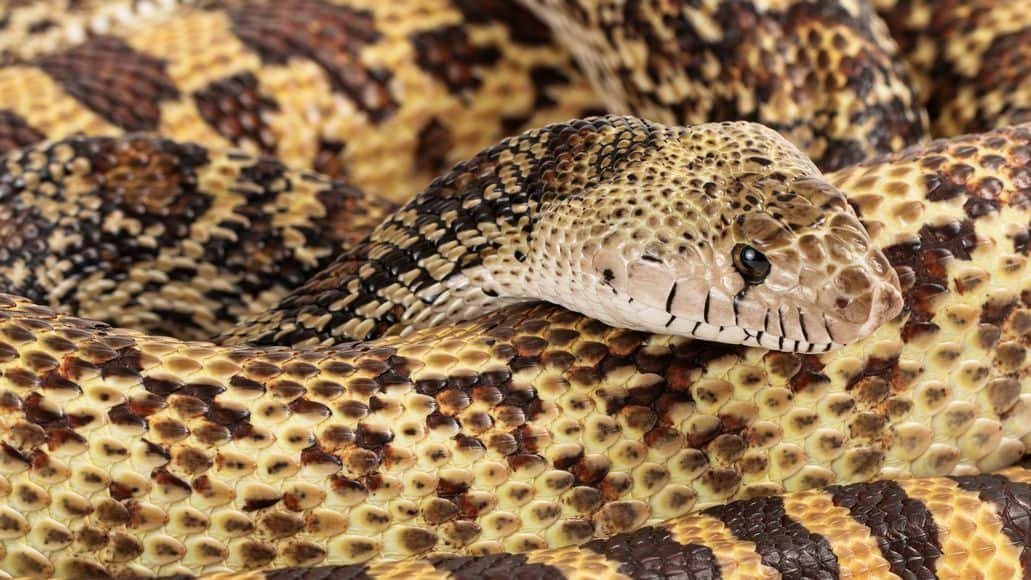
Bull snakes eat small mammals like rats, mice, voles, squirrels, and rabbits. Bull snakes also eat birds and eggs and even climb trees to eat birds from their nests. Bull snakes even eat lizards if they can find them.
Bull Snake Behavior
Bull snakes try to flee when they encounter a predator. Since they can’t move quickly, fleeing is not often successful. Then they try to rise and make themselves look as big as they possibly can.
Bull snakes also try to imitate a rattlesnake with their hissing. Since bull snakes don’t actually have a rattle on their tail, they usually keep their tails on the ground when imitating rattlesnakes.
This is a clever move because they can rub their tail against gravel or dry leaves to make a distracting noise.
Bull snakes live for twelve to twenty-five years. They breed in spring after waking from their hibernation.
They lay eggs in summer and leave the eggs to incubate unattended until they hatch in August or September. Baby snakes are ready to reproduce once they are two years old.
Differences Between Bull Snakes And Gopher Snakes
Both snakes can grow to long lengths, but the bull snake has a thinner body, while the gopher snake is thicker.
Gopher snakes and bull snakes both have round pupils and big eyes, larger than those of a rattlesnake. Gopher snakes have a brown line coming down from their eyes.
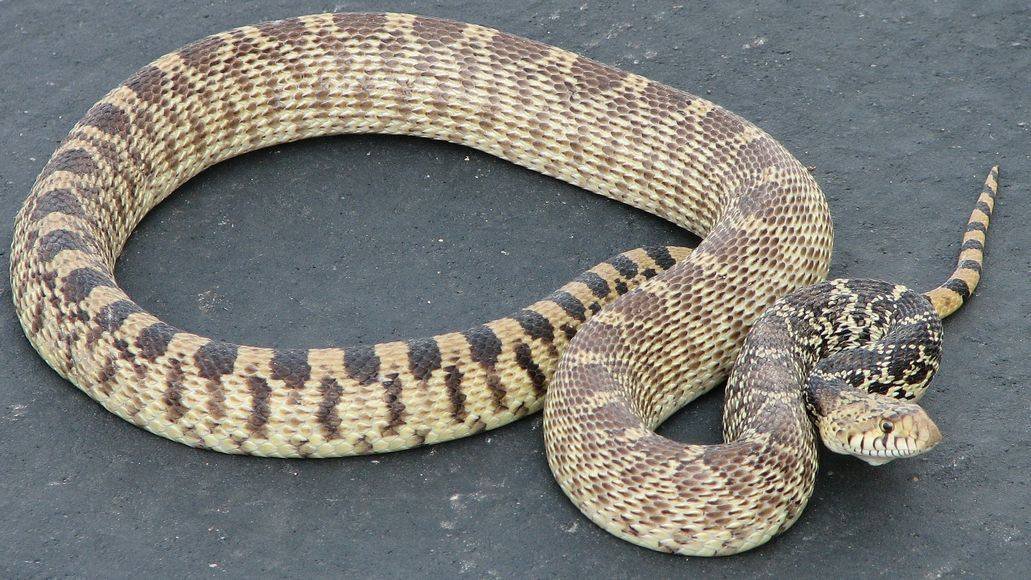
Gopher snakes and bull snakes are widely found through the central and western United States and even in southwestern Canada and northern Mexico.
However, there are no bull snakes in Arizona. Different subspecies of gopher snakes and bull snakes inhabit different regions.
Similarities
Since bull snakes are a subspecies of gopher snakes, it makes sense that they have a lot of characteristics in common.
There are different subspecies of both gopher and bull snakes based on where the snakes are found. Maps can show what specific type of snake lives in certain regions.
Both bull and gopher snakes are nonvenomous, but they will both imitate rattlesnakes to scare away predators.
Both snakes help with rodent control, so instead of killing them when you see them, you should quickly and quietly retreat and leave them to their business.
Advantages Of The Gopher Snake

Gopher snakes make great pets. The bull snake is a type of gopher snake, but it is the largest. Other gopher snakes are thus smaller, making them easier to keep as pets.
They are well-behaved overall, but they can be a bit aggressive. Gopher snakes act like they will attack when threatened, but they mostly try to imitate a rattlesnake to make the predator back off.
You will be able to notice this behavior and leave the gopher snake alone before it strikes. Even if it attacks, it usually uses a closed mouth. Thus, they pose little danger to us.
Advantages Of The Bull Snake
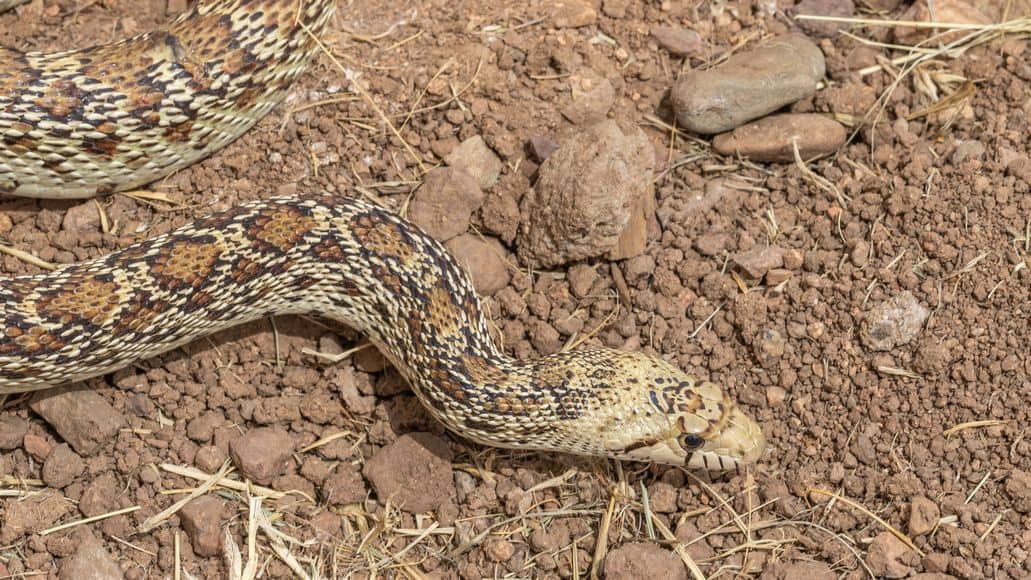
Bull snakes are also harmless to us. They only bite if provoked and their small teeth don’t do much damage, but they can be painful. They are non-venomous.
Bull snakes are more sensitive to movements coming from above, so if you approach them slowly from the side, they are more likely to be comfortable with you handling them.
If you want a larger snake, the bull snake is one of the largest species that is harmless to us. They also live for a long time (over 20 years), which will be an advantage to some.
It might take a while for a bull snake to get used to being handled. This, coupled with the large size, means they are probably not suited to first-time snake owners. We’d only recommend a bull snake to an experienced owner.
Who Should Get A Gopher Snake (And Why)?
If you’re getting your first pet snake, gopher snakes are a great choice because they are very low maintenance. They don’t require much special care in terms of temperature and humidity. Gopher snakes can live in cages kept at room temperature and up to ten degrees higher.
Baby gopher snakes are about a foot long but can grow to 4 to 5 feet as adults, so you’ll need a cage that can accommodate their size. If you take good care of your pet gopher snake, it can live for up to 30 years!
Who Should Get A Bull Snake (And Why)?
Bull snakes make good pets once they grow used to being handled. But so they’re not ideal pets for inexperienced snake owners.
Bull snakes will bite if they’re provoked or uncomfortable. Even though they’re not venomous snakes and the bites are harmless, they can be painful.
Baby bull snakes can be up to 19 inches long but can grow to longer than six feet even in captivity. You’ll want to make sure you terrarium is big enough for them to live comfortably, so a home with plenty of space is a necessity for bull snake ownership.
Bull Snake Vs Gopher Snake
The bottom line is this: the gopher snake is easier to care for and more docile. But the bull snake is the more impressive pet.
If you don’t have any experience with snakes, definitely go with the gopher snake. If you have some experience and you want a snake that will impress people, then the bull snake is the right choice for you.
bryan hauschild says
do you have a photo of the gopher with a brown line from its eye next to a bull without? other than the yellow belly of the gopher, what color belly does the bull have?